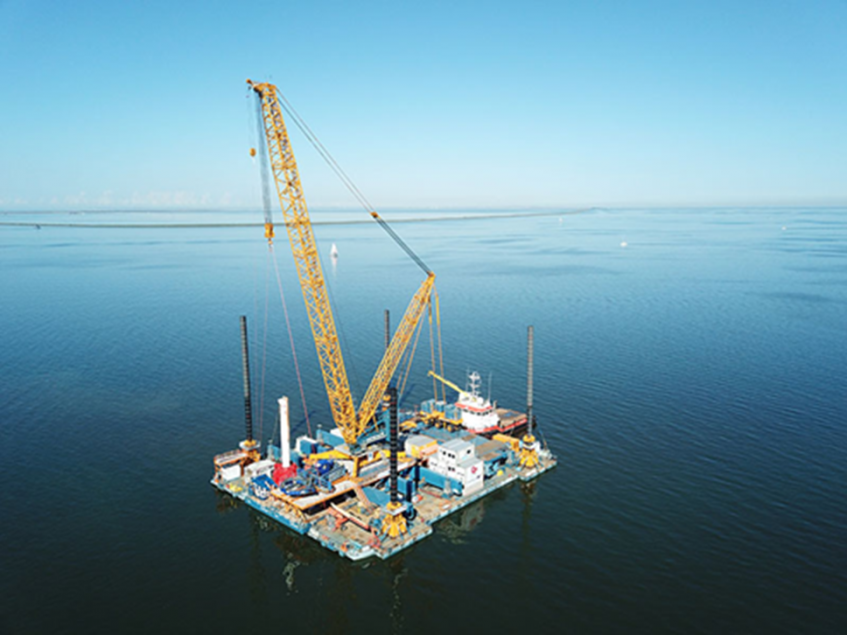Recent News
- Waves Group Celebrate 5 Years of Operation in Singapore
- Major Milestone Achieved in the Decommissioning of the Historic Royal Sovereign Lighthouse
- Waves Group Welcomes Captain Stanislav Ivanov as Vice President of the Houston office
- Waves Group Goes Green with Green Marine’s Project Verdant – UK’s First CTV (Crew Transfer Vessel) Powered by Hydrogen
- A New Organisational Structure for Waves Group Board of Directors
Archives
- March 2024
- December 2023
- November 2023
- June 2023
- April 2023
- February 2023
- January 2023
- November 2022
- October 2022
- September 2022
- August 2022
- July 2022
- June 2022
- May 2022
- April 2022
- March 2022
- February 2022
- September 2021
- June 2021
- May 2021
- March 2021
- February 2021
- January 2021
- December 2020
- October 2020
- September 2020
- August 2020
- July 2020
- April 2020
- March 2020
- February 2020
- January 2020
- December 2019
- November 2019
- October 2019
- September 2019
- August 2019
- June 2019
- May 2019
- April 2019
- March 2019
- February 2019
- January 2019
- November 2018
- October 2018
- September 2018
- July 2018
- May 2018
- September 2017
- July 2017
- January 2017
- December 2016
Waves Group supports Sarens with Design and Heavy Lift Engineering in the Installation of Fryslan Nearshore Wind Farm
May 13, 2021

Waves Group’s engineering team supported Sarens in the concept design and engineering of a large floating platform which was used for the construction and installation of the Fryslan nearshore wind farm project. The Fryslan wind farm is a unique project located in the IJsselmeer lake in the Netherlands, characterised by its shallow water and limited access via narrow locks. The 380MW wind farm, which is expected to start operating this year, will consist of 89 turbines with an energy generating capacity of 4.3MW. This is corresponding to the consumption of some 500,000 households.
We were first contacted by Sarens in summer 2019 to assess the feasibility of the large platform. The concept relied on assembling four barges, linking them by beams overarching the four decks, to provide a work area wide enough to support all the equipment including a 1250T crane, whilst maintaining a shallow draught required for the offshore installation. The whole facility was to be held in position and stabilised during critical lifts by spuds.
A hydrostatic model of the deck was built to assess the stability against well-known criteria (IMO and DNVGL), but also location specific ones suitable for European Inland Waterways. We undertook motions analyses to provide Sarens with accelerations at key locations such as the tip of the crane to assess the deformation of the boom, as well as at the sea-fastening locations, to ensure the crane would be well secured during transportation to site and operations.
As the design progressed, a detailed model of the deck was produced using OrcaFlex, an industry standard software, able to handle multiple vessels joined, subject to complex environmental conditions. We provided bending moment and shear force on the beams connecting the four barges, motions, and accelerations at various locations on deck and along the length of the crane boom and finally loads generated on the spuds by the environmental conditions (current, wind and waves) to maintain the deck in position. A mooring analysis was also performed, should the deck be brought to a sheltered location and moored during a storm. The video below shows the design in OrcaFlex.
By assembling four of their barges, a large deck 63m x 49m was provided by Sarens, allowing the draught during installation to remain in the 2.0 – 2.5m range. The monopiles weighed up to 250T for a length of 39m thus requiring the use of a tall crane for the lift and installation. During the monopile installation, the deck was maintained in place using spuds driven in the seabed.
To drive the monopile in the seabed, a hydraulic hammer was used, and detailed hydrodynamic analyses were performed to calculate the rigging loads but also the maximum excursion of the hammer once held in the air during the hammering operation. Alongside the main analysis, the influence of a range of factors was investigated including soil model properties and location specific wave and wind profiles.
This study developed over 18 months leading into detailed advanced engineering culminating in the construction of the deck by Sarens and the successful installation of 89 monopiles in the IJsselmeer by Van Oord in late 2020.
Wave Group is proud to have been part of the project, providing advanced hydrodynamic analysis and technical support. The concept design of the large platform assisted Sarens to deliver the project on schedule. The successful delivery of the project reinforces our engineering expertise and capabilities. Our team of Naval Architects and Structural Engineers have the technical expertise to support your project from the concept through to installation using industry standard software and advanced modelling techniques.
For further information about our engineering and consultancy services please email mail@waves-group.co.uk, or contact us on our 24- hr emergency response number +44 (0) 20 7083 7266.
Image: Sarens

